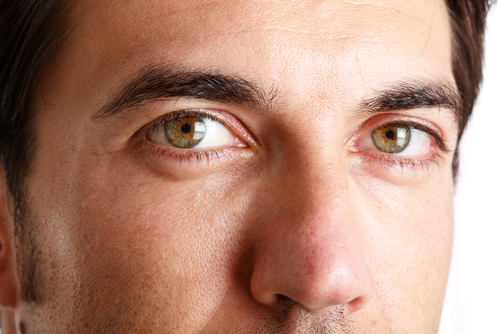DIAGNOSIS
Your doctor will review your medical history and your symptoms, conduct an eye examination, and perform tests to diagnose keratitis.
Diagnosing keratitis typically involves the following:
- Eye exam. Your doctor will perform a general examination of your eye. It may be uncomfortable to open your eye for the exam, but it’s important that your doctor be able to examine your eye. The exam will include an effort to determine how well you can see (visual acuity), usually using standard eye charts.
- Penlight exam. Your doctor may examine your eye using a penlight, to check your pupil’s reaction, size and other factors. Your doctor may apply a stain to the surface of your eye, to help identify the extent and character of surface irregularities and ulcers of the cornea.
- Slit-lamp exam. Your doctor may examine your eyes with a special instrument called a slit lamp, which provides a bright source of light and magnification. This instrument uses an intense line of light — a slit-like beam — to illuminate your cornea, iris, lens, and the space between your iris and cornea. The light allows your doctor to view these structures with high magnification to detect the character and extent of keratitis, as well as the effect it may have on other structures of the eye.
- Laboratory analysis. Your doctor may take a sample of tears or some cells from your cornea for laboratory analysis to determine the cause of keratitis and to help develop a treatment plan for your condition.
TREATMENT
Noninfectious keratitis
Treatment of noninfectious keratitis varies depending on the cause. If your keratitis is caused by a scratch or extended contact lens wear, you may not need any treatment. If you’re having significant tearing and pain, you may need to apply prescription medicine to the eye and wear an eye patch until your condition improves.
Infectious keratitis
Treatment of infectious keratitis varies, depending on the cause of the infection.
- Bacterial keratitis. For mild bacterial keratitis, antibacterial eyedrops may be all you need to effectively treat the infection. If the infection is moderate to severe, you may need to take oral antibiotics.
- Fungal keratitis. Keratitis caused by fungi typically requires antifungal eyedrops and oral antifungal medication.
- Viral keratitis. If a virus is causing the infection, antiviral eyedrops and oral antiviral medications may be effective. But these medications may not be able to eliminate the virus completely, and viral keratitis may recur.
- Acanthamoeba keratitis. Keratitis that’s caused by the tiny parasite acanthamoeba can be difficult to treat. Antibiotic eyedrops may be helpful, but some acanthamoeba infections are resistant to medication.
If keratitis that doesn’t respond to medication, or if it causes permanent damage to the cornea that significantly impairs your vision, your doctor may recommend a cornea transplant.


